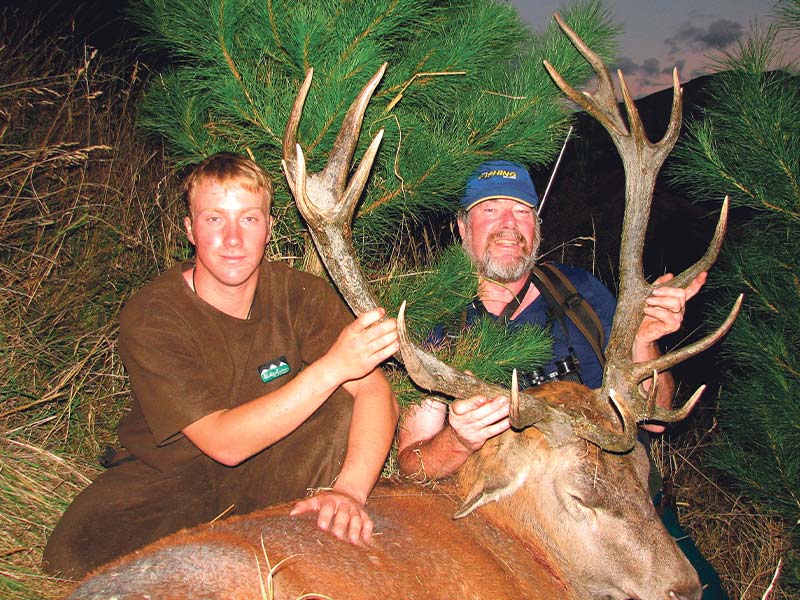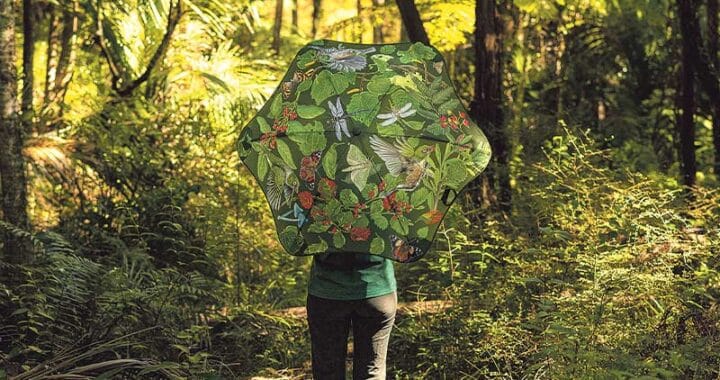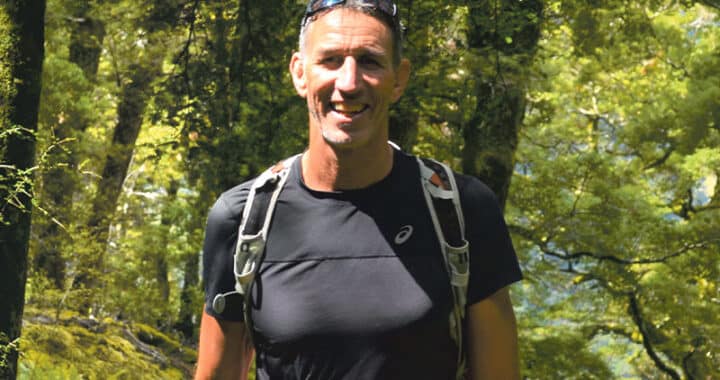Navigating the Roar
3 min read
An impressive antlered stag for a happy Marlborough hunter. Photo: Tony Orman
With thousands of hunters heading into the hill for the annual deer Roar, TONY ORMAN recounts a tale highlighting the importance of caution and preparedness amidst the excitement of the hunt.
Around this time, likely a week or two on either side probably as you read this, red deer stags compete for hinds. It’s the Roar season. The stags forsake their usual cunning and solitary existence and become quite fearless and bold in their eagerness to acquire wives. Competition between stags is intense and at times the ridges and valleys echo with the constant bellowing of stags challenging each other.
Sometimes, these challenges climax in physical conflict with fierce clashing of antlers, and sometimes, some clashes result in the entanglement of antlers, leading to the slow, sad death of the combatants.
During one late afternoon quite a few years ago, I crouched in a sun-dappled glade in the Kaweka Ranges.
A red stag roared above me and immediately, there came an answering challenge of another stag lower down the valley, but only a short distance away.
I roared back, careful not to overdo it. It was obvious as the roaring continued that the stags were converging on me. I continued to give the occasional grunt and low, muted roar as they drew closer. Suddenly, a crashing of undergrowth and clashing of antlers took place as the two stags met. Within seconds, the fierce skirmish was ended, and I heard the defeated stag crash uphill while the victor roared his triumph to any would-be challengers.
There was another challenger – me. I roared and the stag roared back. The stag rumbled a reply. Then all was silent.
I knew the stag was close at hand. Then came the lustful roar of a stag, at even closer quarters, accompanied by the crashing of undergrowth as it charged directly towards me. I doubt I’ve ever moved faster. It took only seconds to stand upright, snatch my rifle, throw it to my shoulder as I closed the bolt, and aim at the charging eight point stag. The bullet ploughed its fatal way, and the stag crashed to the ground just five metres away.
Understandably, the roar is an exciting time for many hunters. But it’s time for cool thought, too. It’s not a time for killing several stags. Instead, take an animal for its quality antlers and, of course, meat. I’ve retrieved the meat off every stag I’ve ever shot. Some say the meat of a stag in the roar is rank and not suitable for deep freezing for later dining. I’ve never found that to be so. Stag meat is ideal for mincing, deep freezing, and later making hamburgers or dishes, such as lasagne or spaghetti Bolognese.
There’s a common misconception that the red deer stag, as portrayed in Landseer’s Monarch of the Glen painting, is the majestic monarch of the hills. It’s not true. The leader of any group of deer is invariably the oldest hind. The stag never attains leadership and during the rut (roar) is quite oblivious to the danger.
Be judicious in the stag you take. While shooting a stag with a big rack of antlers is every hunter’s ambition at some stage, don’t kill an obviously young stag with a promising but not yet full-grown set of antlers. Show mercy and leave any quality young stag to mate his good genes and mature his antlers over the next few years.
However, a word of caution. Don’t let the excitement of a nearby roaring stag obscure your judgement. Firearm safety must always be the top priority because even if you’re hunting alone on public land, it’s highly likely that other hunters will be around. If you’re on private property, the fact that the farmer has given you the okay does not guarantee there are no other hunters in the area. Poachers have no reluctance to slide through or over boundary fences.
Above all, identify your target beyond all doubt. If you’re with a group, work out where each will hunt. Involve everyone in decision-making on where to hunt to avoid conflict. Even so, things can go awry if just one inadvertently strays from their designated area. At the end of the day, you must positively identify that the roar of a stag is a deer and not a person. Wear orange ‘blaze’ if bush hunting.
Words by Tony Orman



